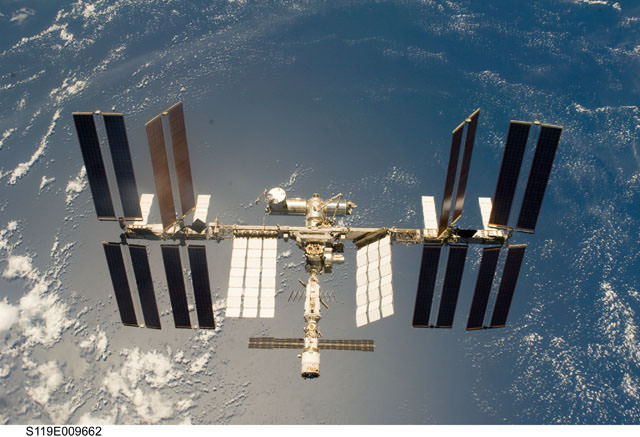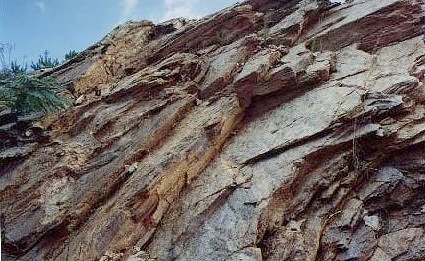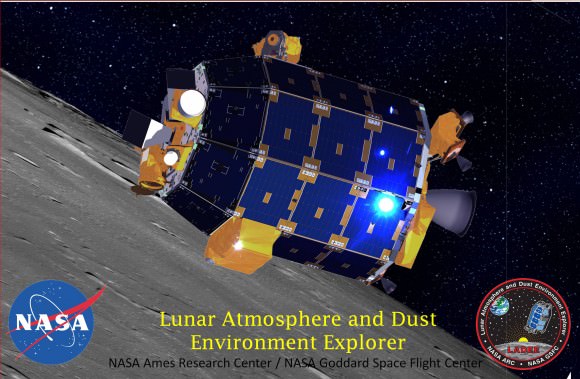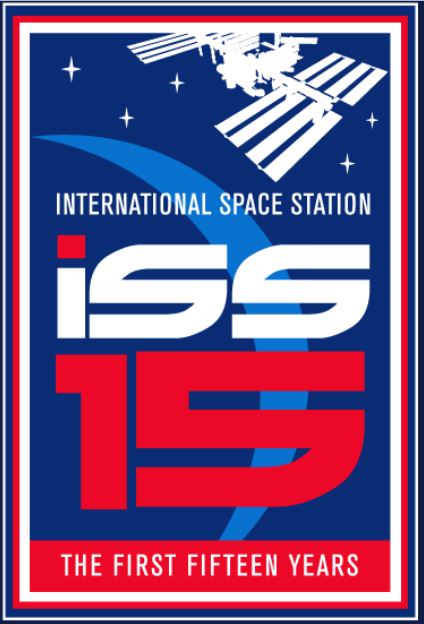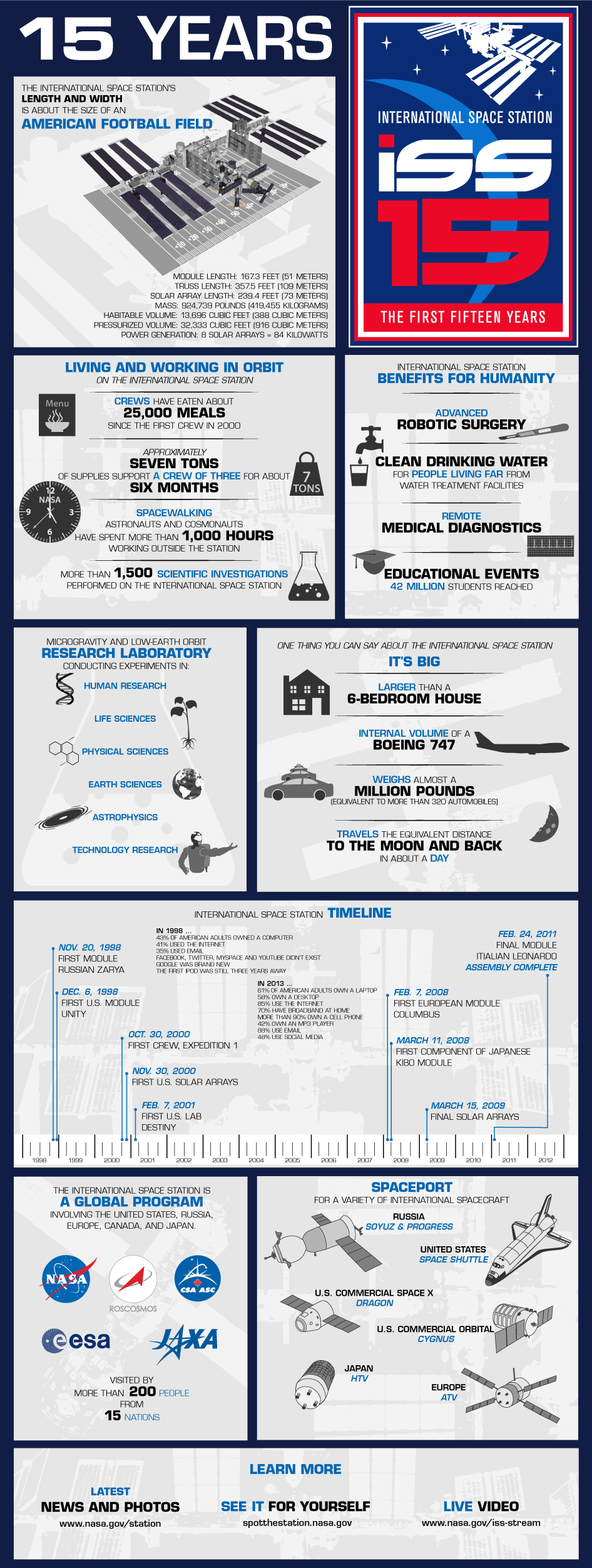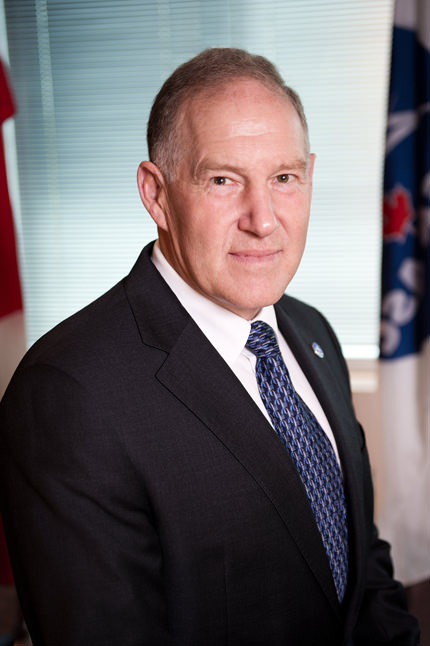We now take it for granted that astronauts on the International Space Station can tweet and post things on Facebook and G+ live from space, but it wasn’t always so. Before January of 2010, any emails, news, or Twitter messages were sent to and from the ISS in uplink and downlink packages, so for example, Twitter messages from the astronauts were downlinked to mission control in Houston, and someone there posted them on the astronauts’ Twitter accounts. But now they have “live” internet. However, as you can imagine, there are no fiberoptic cables hooking up to the ISS, so the internet speeds aren’t blazing fast. Find out how fast in this latest video update from NASA’s Space to Ground, a weekly update on what’s happening aboard the ISS.
Why Einstein Will Never Be Wrong
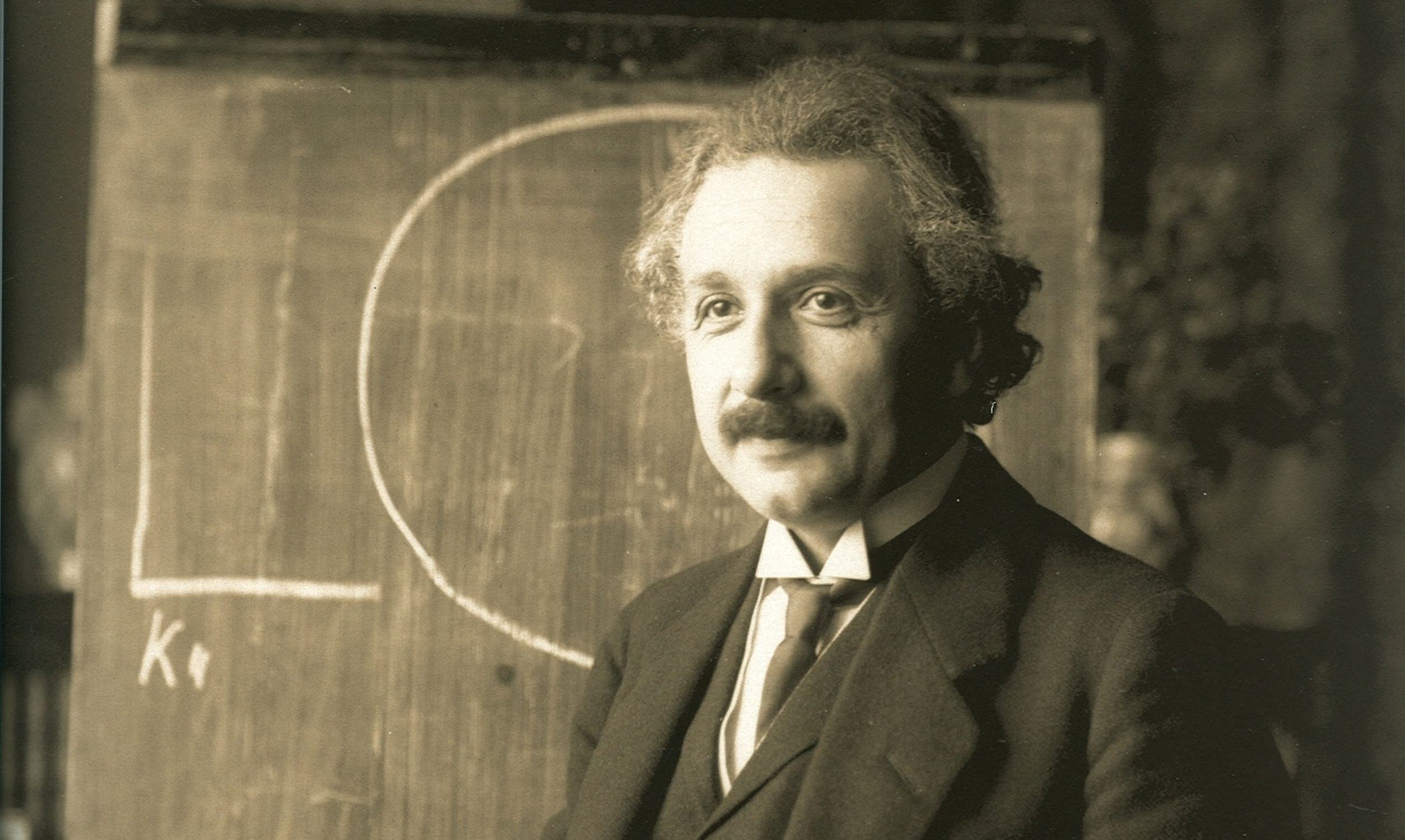
One of the benefits of being an astrophysicist is your weekly email from someone who claims to have “proven Einstein wrong”. These either contain no mathematical equations and use phrases such as “it is obvious that..”, or they are page after page of complex equations with dozens of scientific terms used in non-traditional ways. They all get deleted pretty quickly, not because astrophysicists are too indoctrinated in established theories, but because none of them acknowledge how theories get replaced.
For example, in the late 1700s there was a theory of heat known as caloric. The basic idea of caloric was that it was a fluid that existed within materials. This fluid was self-repellant, meaning it would try to spread out as evenly as possible. We couldn’t observe this fluid directly, but the more caloric a material has the greater its temperature.
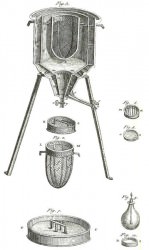
From this theory you get several predictions that actually work. Since you can’t create or destroy caloric, heat (energy) is conserved. If you put a cold object next to a hot object, the caloric in the hot object will spread out to the cold object until they reach the same temperature. When air expands, the caloric is spread out more thinly, thus the temperature drops. When air is compressed there is more caloric per volume, and the temperature rises.
We now know there is no “heat fluid” known as caloric. Heat is a property of the motion (kinetic energy) of atoms or molecules in a material. So in physics we’ve dropped the caloric model in terms of kinetic theory. You could say we now know that the caloric model is completely wrong.
Except it isn’t. At least no more wrong than it ever was.
The basic assumption of a “heat fluid” doesn’t match reality, but the model makes predictions that are correct. In fact the caloric model works as well today as it did in the late 1700s. We don’t use it anymore because we have newer models that work better. Kinetic theory makes all the predictions caloric does and more. Kinetic theory even explains how the thermal energy of a material can be approximated as a fluid.
This is a key aspect of scientific theories. If you want to replace a robust scientific theory with a new one, the new theory must be able to do more than the old one. When you replace the old theory you now understand the limits of that theory and how to move beyond it.
In some cases even when an old theory is supplanted we continue to use it. Such an example can be seen in Newton’s law of gravity. When Newton proposed his theory of universal gravity in the 1600s, he described gravity as a force of attraction between all masses. This allowed for the correct prediction of the motion of the planets, the discovery of Neptune, the basic relation between a star’s mass and its temperature, and on and on. Newtonian gravity was and is a robust scientific theory.
Then in the early 1900s Einstein proposed a different model known as general relativity. The basic premise of this theory is that gravity is due to the curvature of space and time by masses. Even though Einstein’s gravity model is radically different from Newton’s, the mathematics of the theory shows that Newton’s equations are approximate solutions to Einstein’s equations. Everything Newton’s gravity predicts, Einstein’s does as well. But Einstein also allows us to correctly model black holes, the big bang, the precession of Mercury’s orbit, time dilation, and more, all of which have been experimentally validated.
So Einstein trumps Newton. But Einstein’s theory is much more difficult to work with than Newton’s, so often we just use Newton’s equations to calculate things. For example, the motion of satellites, or exoplanets. If we don’t need the precision of Einstein’s theory, we simply use Newton to get an answer that is “good enough.” We may have proven Newton’s theory “wrong”, but the theory is still as useful and accurate as it ever was.
Unfortunately, many budding Einsteins don’t understand this.

To begin with, Einstein’s gravity will never be proven wrong by a theory. It will be proven wrong by experimental evidence showing that the predictions of general relativity don’t work. Einstein’s theory didn’t supplant Newton’s until we had experimental evidence that agreed with Einstein and didn’t agree with Newton. So unless you have experimental evidence that clearly contradicts general relativity, claims of “disproving Einstein” will fall on deaf ears.
The other way to trump Einstein would be to develop a theory that clearly shows how Einstein’s theory is an approximation of your new theory, or how the experimental tests general relativity has passed are also passed by your theory. Ideally, your new theory will also make new predictions that can be tested in a reasonable way. If you can do that, and can present your ideas clearly, you will be listened to. String theory and entropic gravity are examples of models that try to do just that.
But even if someone succeeds in creating a theory better than Einstein’s (and someone almost certainly will), Einstein’s theory will still be as valid as it ever was. Einstein won’t have been proven wrong, we’ll simply understand the limits of his theory.
Antares Private Rocket Thunders off Virginia Coast bound for Space Station – Marks 2nd US Commercial Launch This Week
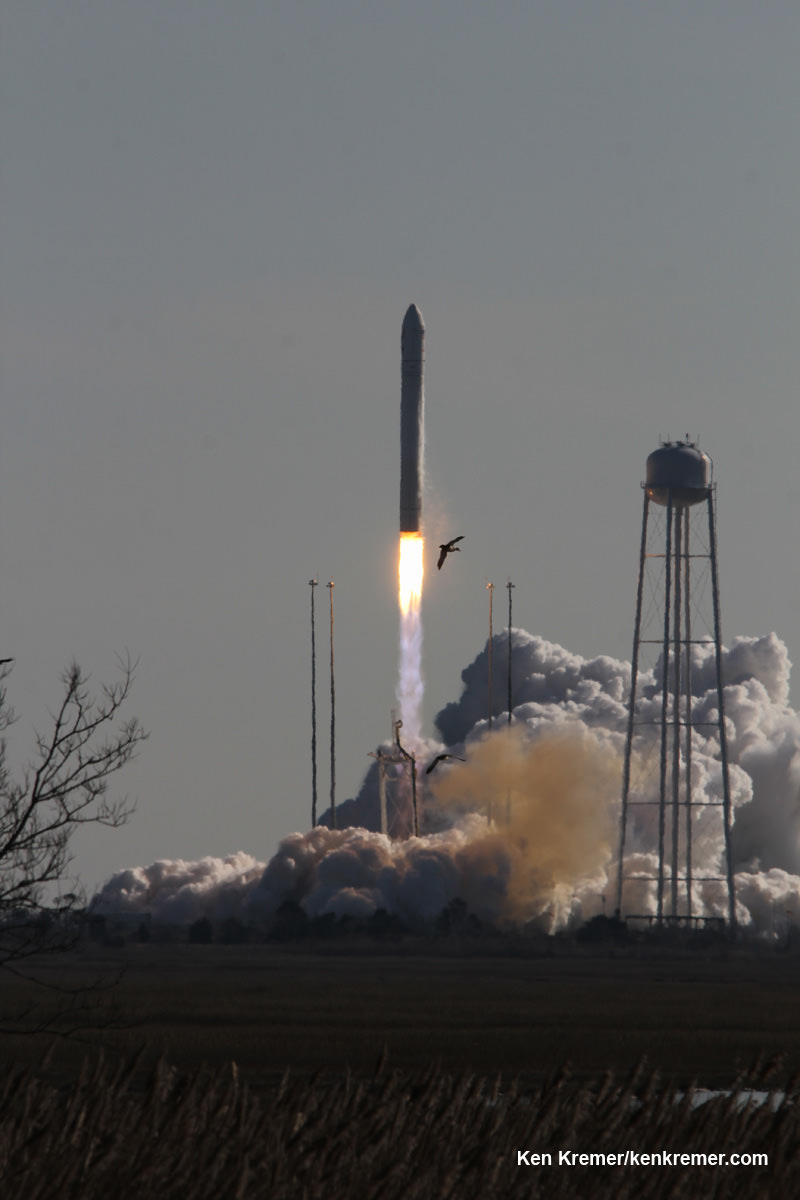
Birds take flight as Antares lifts off for Space Station from Virginia Blastoff of Antares commercial rocket built by Orbital Sciences on Jan. 9, 2014 from Launch Pad 0A at NASA Wallops Flight Facility, VA on a mission for NASA bound for the International Space Station and loaded with science experiments.
Credit: Ken Kremer – kenkremer
Story updated[/caption]
WALLOPS ISLAND, VA – A private Antares rocket thundered off a Virginia launch pad today (Jan. 9) bound for the International Space Station on a breakthrough mission that marks the second successful commercial rocket launch by an American aerospace company this week – a feat that’s sure to send shock waves reverberating around the globe as well as providing an absolutely crucial life line to the station.
The majestic blastoff of Orbital Science’s Antares rocket took place from a beach side pad at NASA’s Wallop’s Flight Facility along the eastern shore of Virginia, Thursday, at 1:07 p.m. EST.
A flock of birds flew by just as Antares soared off the pad – see my lucky shot above.
The milestone flight was conducted under Orbital’s $1.9 Billion contract to NASA as the firm’s first operational cargo delivery flight to the ISS using their own developed Cygnus resupply vehicle.
“Today’s launch gives the cargo capability to keep the station going,” said Frank Culbertson, executive vice president and general manager of Orbital’s advanced spaceflight programs group, and former Space Shuttle commander.
“Everything was right on the money.”
And with the ISS lifetime in Earth orbit now newly extended by the Obama Administration to 2024, the resupply freighters pioneered by Orbital Sciences and SpaceX – in partnership with NASA – are even more important than ever before to keep the station well stocked and humming with an ever increasing array of research projects.
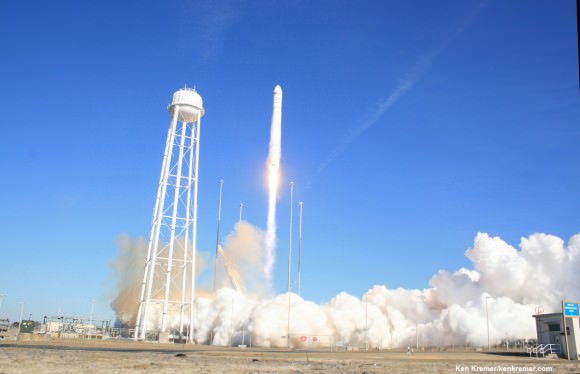
The goal was to restore America’s cargo and crew capabilities to low Earth orbit and the ISS that was totally lost following the forced retirement of NASA’s Space Shuttles.
Cygnus is packed chock full with a myriad of science experiments for dozens of new NASA science investigations as well as two dozen student science experiments from school across the country.
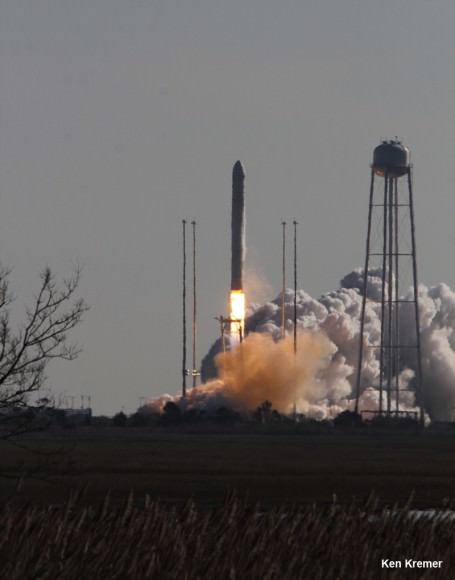
Both the terrestrial and space weather forecasts improved dramatically in the final hours of the countdown and cooperated to allow today’s magnificent Antares launch.
The launch of the two stage, 133 foot tall Antares put on a spectacular sky show that may – because of crystal clear skies – have been visible to millions of spectators spread across the US east coast from the Carolina’s to Connecticut.
Antares beautiful liftoff on Thursday comes on the heels of Monday’s (Jan. 6) SpaceX Falcon 9 liftoff .
Furthermore, it marks a grand success for the innovative US strategy of forging low cost, reliable and effective access to space by handing the task of building the rockets and cargo vehicles to US commercial companies for routine jobs in Earth orbit while NASA focuses on investing in deep space exploration.
“Today’s launch demonstrates how our strategic investments in the American commercial spaceflight industry are helping create new jobs here at home and keep the United States the world leader in space exploration,” NASA Administrator Charles Bolden said in a NASA statement.
“American astronauts have been living and working continuously in space for the past 13 years on board the International Space Station, and we’re once again sending them supplies launched from U.S. soil.”
“In addition to the supplies, the passion and hard work of many researchers and students are being carried by Cygnus today. I congratulate Orbital and the NASA teams that made this resupply mission possible.”
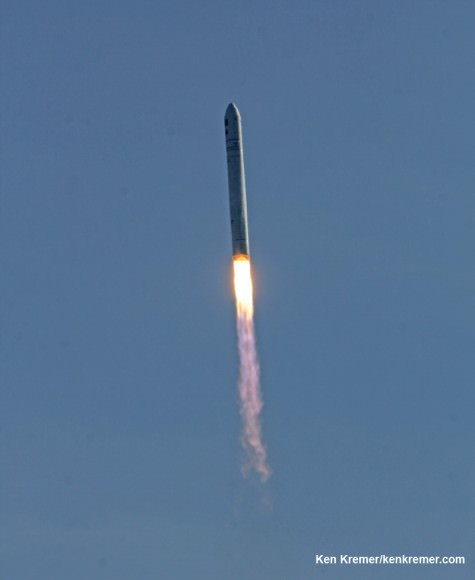
The fourth launch attempt was finally the charm after a trio of postponements since mid- December 2013 to fix the malfunctioning cooling system on the station, unprecedented frigid weather and then an unexpected blast of solar radiation from the Sun on Tuesday (Jan. 7) that could have fried the delicate electronics controlling the rockets ascent with disastrous consequences.
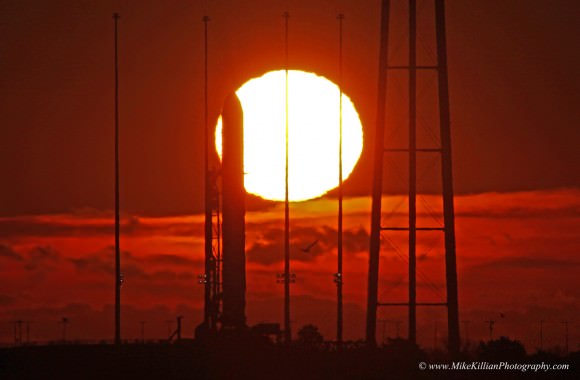
Both the Antares and Cygnus are private vehicles built by Orbital Sciences under a $1.9 Billion supply contract with NASA to deliver 20,000 kilograms of research experiments, crew provisions, spare parts and hardware to the ISS.
Orbital Sciences commercial competitor, SpaceX, is likewise under contract with NASA to deliver 20,000 kg of supplies to the ISS with the SpaceX Falcon 9/Dragon architecture.
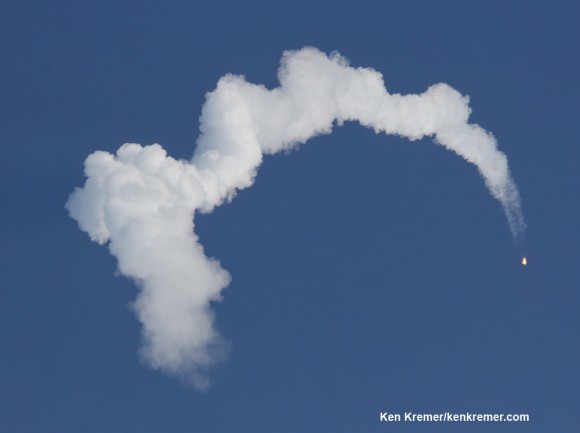
Both the Orbital Sciences Antares/Cygnus and SpaceX Falcon 9/Dragon vehicles were developed from the start with seed money from NASA in a public-private partnership.
The flight is designated the Orbital-1, or Orb-1 mission.
A total of eight Antares/Cygnus missions to the space station are scheduled over the next two to three years by Orbital under its Commercial Resupply Services (CRS) contract with NASA.
Two additional Antares/Cygnus flight are slated for this year.
They are slated to lift off around May 1 and early October, said Culbertson.
This launch follows a pair of successful launches in 2013, including the initial test launch in April and the 1st demonstration launch to the ISS in September.
Cygnus is loaded with approximately 2,780 pounds / 1,261 kilograms of cargo for the ISS crew for NASA including science experiments, computer supplies, spacewalk tools, food, water, clothing and experimental hardware.
33 cubesats are also on board that will be deployed over time by the 6 person crew living aboard the ISS.
Among the research items packed aboard the Antares/Cygnus flight are an experiment to study the effectiveness of antibiotics in space and a batch of 23 student experiments involving life sciences topics ranging from amoeba reproduction to calcium in the bones to salamanders.
The student experiments selected are from middle school and high school teams from Michigan, Texas, Colorado, and Washington, DC.
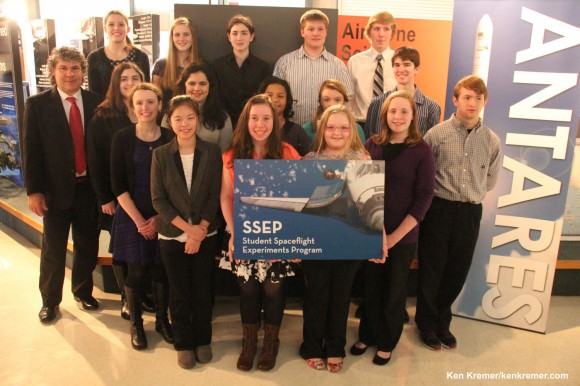
Science experiments from these students representing six schools across America were selected to fly aboard the Cygnus spacecraft which launched to the ISS from NASA Wallops, VA, on Jan . 9, 2014, as part of the Student Spaceflight Experiments Program (SSEP). Credit: Ken Kremer – kenkremer.com
There is also an ant farm aboard with ant colonies from Colorado, North Carolina and of course host state Virginia too. The goal is to study ant behavior in space in zero gravity and compare that to ants on Earth living under normal gravity.
Cygnus will rendezvous with the station on Sunday, Jan 12.
Expedition 38 crew members aboard the station will grapple Cygnus with the stations robotic arm Sunday at 6:02 a.m. EDT.
NASA TV will provide live coverage of Sunday’s docking.
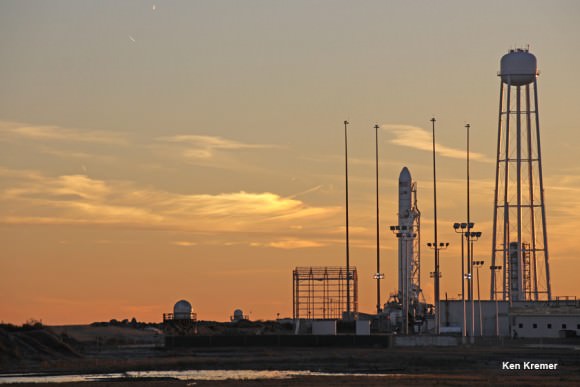
Watch for my ongoing Antares launch reports from on site at NASA Wallops.
Stay tuned here for Ken’s continuing Orbital Sciences, SpaceX, commercial space, Chang’e-3, LADEE, Mars and more news.
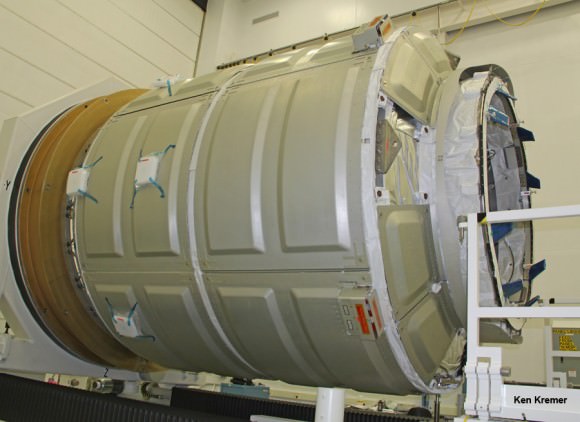
This Town Celebrates Every New Year with a Falling Meteor
Video from YouTube User Pam Bergmann
The popular jazz tune “Stars Fell on Alabama” was inspired in part by the Leonid meteor shower in November of 1833, sometimes referred to as “the night the stars fell.” But the central region of Alabama region has a history of meteorite impacts, including a massive impact over 84 million years ago. The town of Wetumpka, Alabama sits in the middle of an ancient 8-kilometer-wide impact crater that was blasted into the bedrock, creating the unique geology of what is now Elmore County.
To celebrate this “striking” heritage, Wetumpka celebrates every New Year’s Eve with a spectacular recreation of a falling, exploding meteor.
Geologists have pieced together the events from millions years ago, when an asteroid nearly the size of a football stadium crashed into what was at the time a coastal basin covered with a shallow sea. The jumbled and disturbed geology of the area hadn’t made sense to local geologists since they started studying it in the 1800’s, and they had no explanations until mapping in the early 1970’s showed that the rocky layers were pointing away from a central location, which led them to suspect some sort of large impact.
However, this location wasn’t verified as an impact crater until fairly recently, when core samples drilled in 1998 confirmed the impact by detecting the presence of shocked quartz. The Wetumpka Impact Crater was officially recognized in 2002, and is now considered to be the best preserved marine impact crater ever discovered.
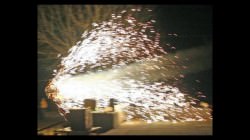
And so, in honor of this history, the folks of Wetumpka have been ringing in the new year by having their own ‘meteor’ streak across the sky and drop to the ground, guided by a wire and followed by fireworks. This event has been recognized as one of the top 10 unique New Year’s Celebrations in the U.S. by TripAdvisor.
You can see the preparation for the event at WSFA 12’s story here.
For more information regarding the crater, visit these sites:
Wetumpka Impact Crater Commission
Wetumpka Meteor Crater Tour by the Auburn Astronomical Society
Wetumpka Impact Crater Page
Also, I was born in Wetumpka, so Happy New Year!
A Self-Healing Satellite? Students Seek Your Funds To Launch Prototype
Imagine if your spacecraft was punctured and it could do the repair itself, without the need of you going outside on a dangerous spacewalk. Well, a Canadian team has a prototype idea that could lead to self-healing structures in space. The concept is all set, and they’re asking for financial help to launch it on crowdsourcing platform Kickstarter.
Here’s how the Concordia University material would work:
– It’s constructed out of carbon fiber (to reinforce it) and an epoxy resin (for its matrix).
– After the structure is damaged, it would “transport … a healing agent” to that area using microcapsules that are inside various spots on the resin.
– The structure then chemically repairs itself (more technical details here.)
“This self-healing material is of high interest within the aerospace community such as the Canadian Space Agency and the European Space Agency. If viable, it would be capable of increasing the lifetime of space structures,” the team stated on the fundraising page.
“Prolonging the life of a spacecraft will decrease the required maintenance over its lifetime, which is impossible in many cases. For example, the ammonia leak that happened on the International Space Station (ISS) in May was probably caused by a micrometeoroid and orbital debris (MMOD) impact. If a self-healing shield is implemented in the ISS, the advantage would be to reduce the amount of manual repairs needed on the exterior of the craft and generally improve its lifespan in orbit. This would allow for an overall cost reduction for the spacecraft.”
The engineering team (which calls itself Space Concordia) won the first Canadian Satellite Design Challenge and plans to launch the satellite from that challenge, ConSat-1, as part of a European Space Agency program. (The team did not disclose a launch date on Kickstarter, but said the project is “currently in the final stages of completion.”) This self-healing satellite would be called ConSat-2.
You can read more details about the campaign on their Kickstarter; the campaign concludes Saturday (Nov. 30). The material was developed by Concordia researcher Suong Van Hoa with help from MPB Technologies and the Canadian Space Agency, among others.
NASA’s LADEE Probe Starts Science Study of Thin Lunar Atmosphere and Dusty Mystery
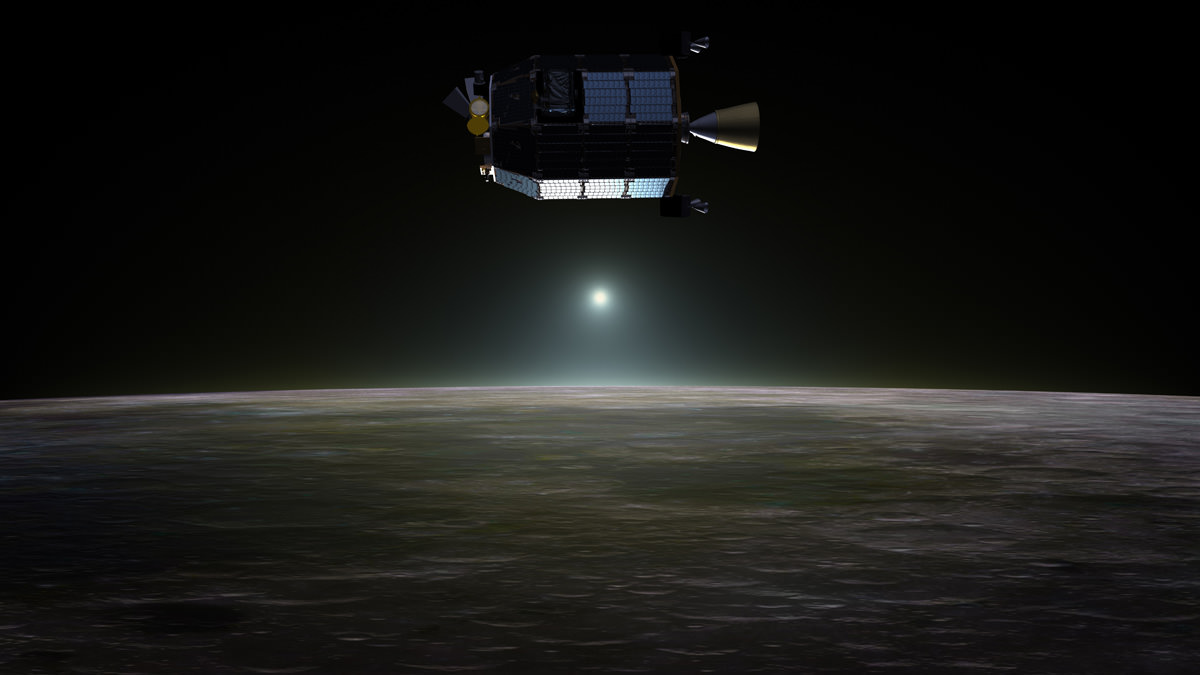
KENNEDY SPACE CENTER, FL – NASA’s Lunar Atmosphere and Dust Environment Explorer (LADEE) has descended to its planned low altitude orbit and begun capturing science data on its ground breaking mission to study the Moon’s ultra tenuous atmosphere and dust using a spacecraft based on a revolutionary new design aimed at speeding development and cutting costs.
LADEE set sail for Earth’s nearest neighbor during a spectacular night time launch atop the maiden flight of an Air Force Minotaur V rocket on Sept. 6 from NASA’s Wallops Island launch facility on Virginia’s Eastern shore.
The flawless launch thrilled spectators up and down virtually the entire US East coast region and yielded many memorable snapshots.
Following a month long voyage and three and a half long looping orbits of the Earth, LADEE successfully fired its main engine for 4 minutes and 12 seconds on Oct. 6 and successfully entered lunar orbit, Dawn McIntosh, LADEE deputy project manager at NASA Ames Research Center, told Universe Today in an exclusive interview.
A series of engine firings over the past month gradually circularized and lowered LADEE into its final science orbit around our Moon while engineers checked out the spacecraft during the commissioning phase of the mission.
The do or die initial Lunar Orbit Insertion burn (LOI-1) allowed LADEE to be captured into a highly elliptical, equatorial lunar orbit, said McIntosh.
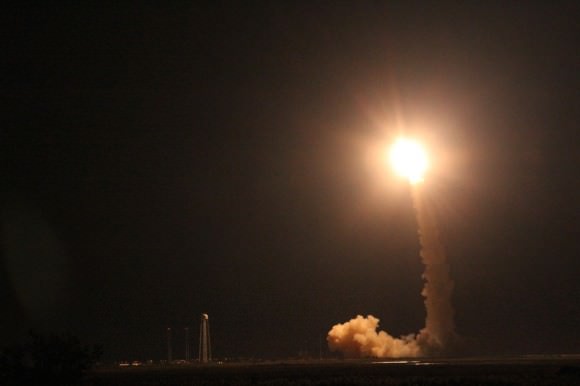
“Two additional LOI burns on Oct. 6 and Oct 9 lowered LADEE to an approximately 4 hour orbit with a periapsis altitude of 234 Kilometers (km) and apoapsis altitude of 250 km” McIntosh told me.
The trio of LOI main engine firings used up most of LADEE’s precious on board fuel.
“LADEE launched with 134.5 kilograms (kg) of fuel. Post LOI-3, 80% of our fuel has been consumed,” said McIntosh.
“Additional orbit-lowering maneuvers with the orbital control system (OCS) and reaction control system (RCS) of approximately 40 seconds were used to get LADEE into the science orbit.
The spacecraft finally entered its planned two hour science orbit around the moon’s equator on Nov. 20.
Its flying at an extremely low altitude ranging from merely eight to 37 miles (12-60 kilometers) above the moon’s surface.
By circling in this very low altitude equatorial orbit, the washing machine sized probe will make frequent passes crossing from lunar day to lunar night enabling it to precisely measure changes and processes occurring within the moon’s tenuous atmosphere while simultaneously sniffing for uplifted lunar dust in the lunar sky.
The remaining fuel will be used to maintain LADEE’s orbit during the approximately 100 day long science mission. The mission length is dictated by the residual fuel available for thruster firings.
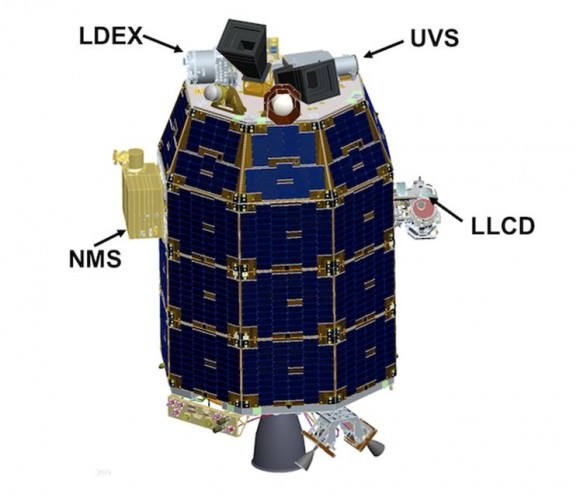
The purpose of LADEE is to collect data that will inform scientists in unprecedented detail about the ultra thin lunar atmosphere, environmental influences on lunar dust and conditions near the surface. In turn this will lead to a better understanding of other planetary bodies in our solar system and beyond.
“A thorough understanding of the characteristics of our lunar neighbor will help researchers understand other small bodies in the solar system, such as asteroids, Mercury, and the moons of outer planets,” said Sarah Noble, LADEE program scientist at NASA Headquarters in Washington.
By studying the raised dust, scientists also hope to solve a 40 year old mystery – Why did the Apollo astronauts and early unmanned landers see a glow of rays and streamers at the moon’s horizon stretching high into the lunar sky.
The $280 million probe is built on a revolutionary ‘modular common spacecraft bus’, or body, that could dramatically cut the cost of exploring space and also be utilized on space probes to explore a wide variety of inviting targets in the solar system.
“LADEE is the first in a new class of interplanetary exploration missions,” NASA Ames Director Worden told Universe Today. “It will study the pristine moon to study significant questions.”
“This is probably our last best chance to study the pristine Moon before there is a lot of human activity there changing things.”
The 844 pound (383 kg) robot explorer was assembled at NASA’s Ames Research Center, Moffett Field, Calif., and is a cooperative project with NASA Goddard Spaceflight Center in Maryland.
LADEE arrived at the Moon last month in the midst of the US government shutdown – which negatively impacted a host of other NASA missions. Only a ‘skeleton crew’ was available.
“All burns went super well,” Worden told me. And he is extremely proud of the entire team of “dedicated” professional men and women who made it possible during the shutdown.
“It says a lot about our people’s dedication and capability when a skeleton crew’ can get a new spacecraft into lunar orbit and fully commissioned in the face of a shutdown!” Worden said to Universe Today.
Now the real science begins for LADEE and the team.
Stay tuned here for continuing LADEE news
…………….
Learn more about LADEE, MAVEN, MOM, Mars rovers, Orion and more at Ken’s upcoming presentations
Nov 22-25: “SpaceX launch, MAVEN Mars Launch and Curiosity Explores Mars, Orion and NASA’s Future”, Kennedy Space Center Quality Inn, Titusville, FL, 8 PM
Dec 11: “Curiosity, MAVEN and the Search for Life on Mars”, “LADEE & Antares ISS Launches from Virginia”, Rittenhouse Astronomical Society, Franklin Institute, Phila, PA, 8 PM
NASA Infographic: 15 Years of the International Space Station
The first International Space Station component, the Russian Zarya module, was launched 15 years ago today, on November 20, 1998. Since then, a consortium of 15 different nations have constructed a world-class orbiting laboratory, with a continual human presence onboard since 2000. Construction was considered officially complete in 2011, but new modules are still planned.
NASA is celebrating the milestone with an infographic showcasing some of the amazing and surprising facts about humanity’s home away from Earth. See below for the infographic, as well as two videos with highlights from the past 15 years of the ISS:
To keep tabs on what is going on daily at the ISS, visit NASA’s ISS webpage. You can also find out how to see the station for yourself at spotthestation.nasa.gov or watch live station video at www.nasa.gov/iss-stream.
From ‘Doggie-Doo’ To Derring-Do: New Canadian Space Head Stresses Innovation In First Public Outing
OTTAWA, CANADA – With a booming voice, Walt Natynczyk — in his first speech after becoming Canadian Space Agency president in September — told delegates that he was happy to give up the “dream of retirement” to take on a challenging position.
“Imagine this picture. February. Saturday morning. 7 in the morning. It’s -25 [Celsius, -13 Fahrenheit] and I’m out there, by my lonesome, walking three dogs. None of which are mine. But their owners, who are family members, who I love, are all headed down south,” Natynczyk said.
“As I’m stooping over to pick up another pile of doggie doo, a neighbor — that I love — sticks her head out the door and says, ‘Hello, how the almighty have fallen.’ ” He paused as the room roared with laughter. “Think about it. That’s when I thought it was time to do something different.”
Natynczyk is best known in Canada for leading a large restructuring of the country’s military. He also was (as an exchange officer) a deputy commanding general in the United States, among other positions, and served in Baghdad at the height of the Iraqi war in 2004. His appointment to the CSA had some worried about the militarization of the agency. Natynczyk, however, focused on how difficult the new vocabulary is to master.
Speaking of a recent conversation with quantum researchers — the field that his predecessor, Steve MacLean, went into after leaving the CSA this year — Natynczyk said to them, “The point at which you start losing me is like talking to my puppy; when I start doing this,” — he tilted his head to one side — “you’re losing me.”
Joking that nanosatellites and microsatellites are equivalent to “milk cartons” and “milk jugs”, Natynczyk said one of his main goals is to make space understandable to the typical Canadian standing in line at Tim Horton’s, a coffee chain that is prolific in the country.
His comments on space policy were few. Last year, the Canadian government asked an external group to do a space development strategy for the country, and little has been mentioned publicly since the strategy was released. Natynczyk said conversations are ongoing with other government departments to address the recommendations.
Throughout, he stressed the importance of Canada’s choice to pursue research and development through the universities (with government support) rather than through government directly.
“It’s what we do with CSA, with the universities and so on, looking for extraordinary concepts that are in a higher-risk category and investing in a modest way — perhaps with other government funding … that allow for exponential jumps.”
Skeleton Crew gets LADEE in Orbit, Checked Out and Fires Revolutionary Laser During Gov’t Shutdown
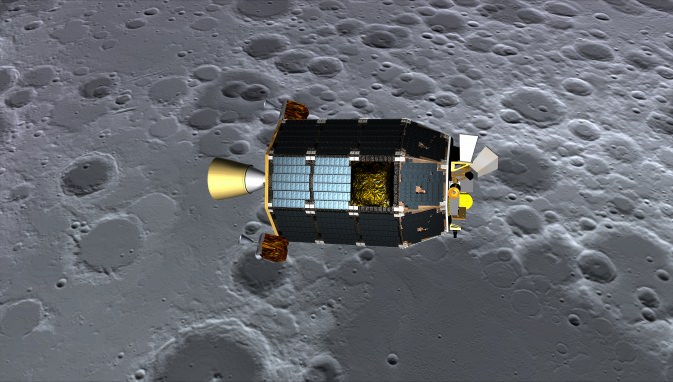
NASA’s new LADEE spacecraft successfully entered lunar orbit, is operating beautifully and has begun shooting its radical laser communications experiment despite having to accomplish a series of absolutely critical do-or-die orbital insertion engine firings with a “skeleton crew ” – all this amidst the NASA and US government shutdown, NASA Ames Research Center Director Pete Worden told Universe Today in a LADEE mission exclusive.
During the two and a half week long NASA shutdown, engineers had to fire LADEE’s maneuvering thrusters three times over six days – first to brake into elliptical orbit about the Moon and then lower it significantly and safely into a circular commissioning orbit.
“All burns went super well,” Ames Center Director Worden told me exclusivly. And he is extremely proud of the entire team of “dedicated” professional men and women who made it possible during the shutdown.
“It says a lot about our people’s dedication and capability when a skeleton crew can get a new spacecraft into lunar orbit and fully commissioned in the face of a shutdown!” Worden said to Universe Today.
“I’m really happy that everyone’s back.”
After achieving orbit, a pair of additional engine burns reduced LADEE’s altitude and period into its initial commissioning orbit and teams began the month long activation and instrument checkout phase.
“We are at the commissioning orbit of 250 km,” said Worden.
And to top all that off, LADEE’s quartet of science instruments are checked out and the ground – breaking laser communications experiment that will bring about a quantum leap in transmitting space science data has already begun its work!
“All instruments are fully checked out with covers deployed.”
“We’ve begun the Lunar Laser Communications Demonstration (LLCD) tests and its working very well,” Worden explained.
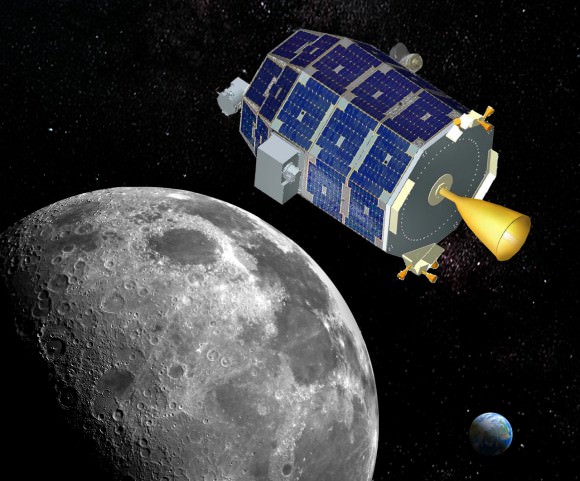
And that’s the whole point of the LADEE mission in the first place.
97% of NASA’s employees were furloughed during the utterly chaotic and wasteful partial shutdown of the US government that lasted from Oct. 1 to Oct. 17 and also temporarily threatened the upcoming launch of NASA’s next mission to Mars – the MAVEN orbiter.
However, orbital mechanics follows the natural laws of the Universe, continues unabated and waits for no one in Washington, D.C.
NASA’s Jupiter-bound Juno orbiter also flew by Earth amidst the DC shutdown showdown on Oct. 9 for a similarly critical do-or-die gravity assisted speed boost and trajectory targeting maneuver.
The stakes were extremely high for NASA’s Lunar Atmosphere and Dust Environment Explorer (LADEE) mission because the spacecraft was on course for the Moon and absolutely had to ignite its main engine on the Sunday morning of Oct. 6.
There were no second chances. If anything failed, LADEE would simply sail past the Moon with no hope of returning later.
So, mission controllers at NASA Ames commanded LADEE to ignite its main engine and enter lunar orbit on Oct. 6 following the spectacular Sept. 6 night launch from NASA’s Wallops Island spaceport in Virginia.
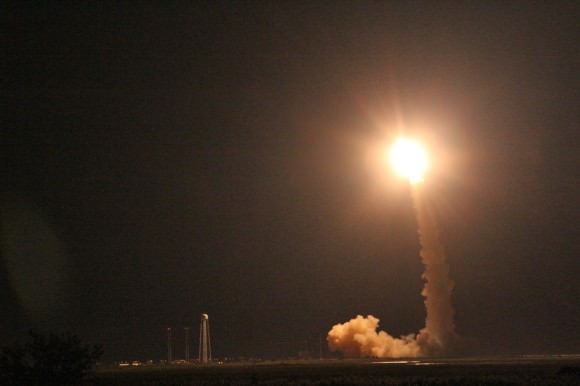
The approximately four minute long burn know as Lunar Orbit Insertion burn 1 (LOI-1) began with LADEE’s arrival at the Moon following three and a half long looping orbits of the Earth.
LOI-1 changed the spacecrafts velocity by 329.8 meters/sec so that the couch sized probe could be captured by the Moon’s gravity and be placed into a 24 hour polar elliptical orbit.
The LOI-2 maneuver on Oct. 9 put LADEE into a 4-hour elliptic lunar orbit. The third and final LOI-3 burn occurred on Oct. 12, and put the spacecraft into the 2-hour commissioning orbit (roughly 235 Km x 250 Km), according to a NASA statement.
The 844 pound (383 kg) robot explorer was assembled at NASA’s Ames Research Center, Moffett Field, Calif., and is a cooperative project with NASA Goddard Spaceflight Center in Maryland.
“LADEE is the first NASA mission with a dedicated laser communications experiment,” said Don Cornwell, mission manager for the Lunar Laser Communications Demonstration (LLCD), NASA’s Goddard Space Flight Center, Greenbelt, Md, during an interview with Universe Today at the LADEE launch.
“With the LLCD experiment, we’ll use laser communications to demonstrate at least six times more data rate from the moon than what we can do with a radio system with half the weight and 25 percent less power,” said Cornwell.
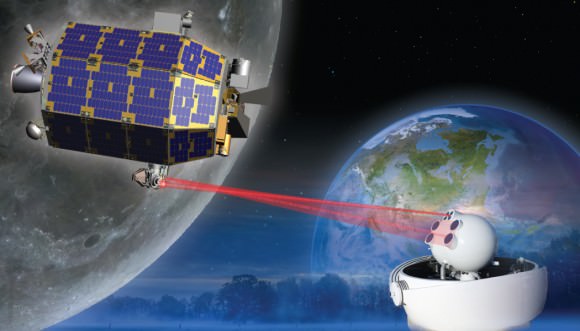
The LLCD will be operated for about 30 days during the time of the commissioning orbit period.
The purpose of LADEE is to collect data that will inform scientists in unprecedented detail about the ultra thin lunar atmosphere, environmental influences on lunar dust and conditions near the surface. In turn this will lead to a better understanding of other planetary bodies in our solar system and beyond.
The $280 million probe is built on a revolutionary ‘modular common spacecraft bus’, or body, that could dramatically cut the cost of exploring space and also be utilized on space probes to explore a wide variety of inviting targets in the solar system.
“LADEE is the first in a new class of interplanetary exploration missions,” NASA Ames Director Worden told Universe Today. “It will study the pristine moon to study significant questions.”
“This is probably our last best chance to study the pristine Moon before there is a lot of human activity there changing things.”
Stay tuned here for continuing LADEE news
NASA Celebrates Return To Work, But Shutdown’s Shadow Could Linger

After 16 days off the job, most employees at NASA returned to work today (Oct. 17). The good news came after a late-night deal by U.S. politicians to reopen government activities until Jan. 15 and raise the debt limit — originally expected to expire today — until Feb. 7. Democrats and Republicans were battling over the implementation of a new health care law; more details on how the deal was reached are available in this New York Times article.
During the shutdown, only mission-essential functions at NASA were completed except at areas such as the Jet Propulsion Laboratory, which are run by contractors. Twitter, Facebook and social media updates went silent. Missions were run on a needs-only basis, and for a while it looked as though the upcoming MAVEN mission to Mars might be delayed (although it got an exception due to its role as a communications relay for NASA’s rovers.)
So you can imagine the happiness on social media when NASA employees returned to work.
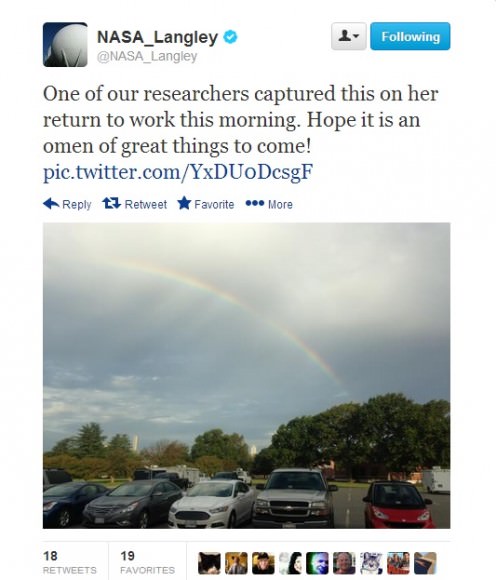
Given the length of the shutdown, not all work can just start immediately. Experiments have been left unattended for more than two weeks. Equipment needs to be powered back on. Cancelled meetings and travel arrangements need to, as it is possible, be rebooked.
At NASA’s Marshall Space Flight Center, spokesperson Don Amatore asked employees to be mindful of safety precautions, according to All Alabama. He also stated that “liberal leave” is in effect for employees today and on Friday, meaning that employees are able to take time off without requesting it beforehand — as long as their supervisors know.
Several Twitter reports from NASA contractors on Thursday also indicated that they were unsure if they would be coming back to work on that day, or at some point in the near future. The agency, however, was reportedly sending automated telephone updates to employees and contractors advising them to check with their supervisors for information.

The long-term effects of the shutdown are still coming to light. Certain NASA researchers who planned Antarctic work this year may lose their entire field season. Also, some researchers using NASA or government telescopes missed their “window” of telescope time. “SOFIA remains grounded as a testament to stupidity. Europa keeps her secrets,” wrote Mike Brown, a professor of planetary astronomy at the California Institute of Technology, on Twitter Oct. 13 about NASA’s Stratospheric Observatory for Infrared Astronomy.
Additionally, the S&P ratings agency noted that the U.S. economy lost $24 billion due to the shutdown, which is more than the initial $17.7 billion request for NASA’s budget in fiscal 2014. Given the agency is in the midst of budget negotiations and is worried about the viability of the commercial crew program, among other items, any long-term economic damage could hurt NASA for a while.
NASA and other government agencies also have only three months of relative stability until the government reaches another funding deadline. What do you think will happen next? Let us know in the comments.

